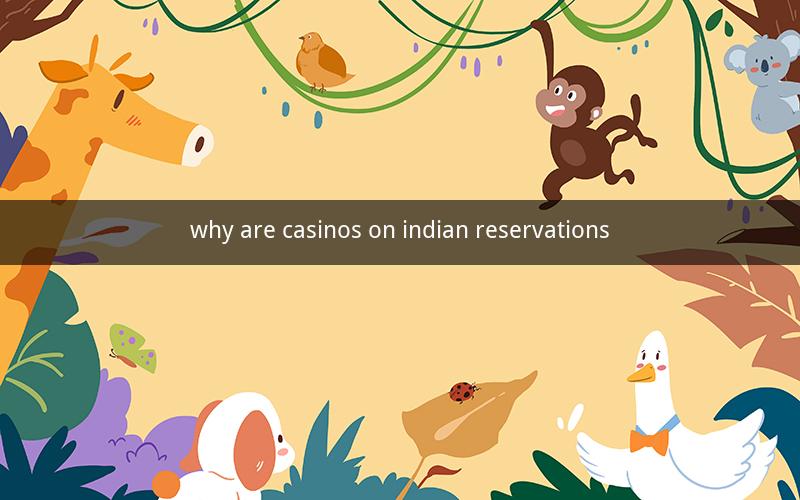
Contents
1. Introduction to Casinos on Indian Reservations
2. Legal Framework and Historical Context
3. Economic Impact on Indian Reservations
4. Cultural Significance and Reconciliation
5. Social and Community Benefits
6. Challenges and Controversies
7. Conclusion
---
1. Introduction to Casinos on Indian Reservations
Casinos on Indian reservations have become a significant aspect of the gaming industry in the United States. These establishments, owned and operated by Native American tribes, offer a variety of gaming options, from slots and poker to bingo and sports betting. The presence of casinos on reservations has sparked a range of discussions, from their legal standing to their impact on local communities.
2. Legal Framework and Historical Context
The legal basis for casinos on Indian reservations stems from the Indian Gaming Regulatory Act (IGRA) of 1988. This act, signed into law by President Ronald Reagan, allowed tribes to offer certain forms of gambling on their lands, as long as they adhered to federal guidelines. The historical context of this legislation is rooted in the complex relationship between the United States government and Native American tribes, marked by treaties, Supreme Court decisions, and a push for self-determination.
3. Economic Impact on Indian Reservations
One of the most significant aspects of casinos on Indian reservations is their economic impact. These establishments often provide substantial revenue to tribes, which can be used for infrastructure development, healthcare, education, and other community services. The creation of jobs and the boost to local economies are also notable benefits. However, the economic impact is not without its challenges, such as potential negative effects on nearby communities and the potential for over-reliance on gaming revenue.
4. Cultural Significance and Reconciliation
Casinos on Indian reservations also hold cultural significance for many tribes. They serve as a source of pride and a means of revitalizing traditional practices. Moreover, the revenue generated from casinos can be used for cultural preservation and educational programs. This aspect of casinos contributes to the broader effort of reconciliation between Native American tribes and the United States government.
5. Social and Community Benefits
The presence of casinos on Indian reservations can lead to a range of social and community benefits. These include improved living conditions, increased access to healthcare, and enhanced educational opportunities. Additionally, casinos can serve as a focal point for community events and gatherings, fostering a sense of unity and belonging.
6. Challenges and Controversies
Despite the numerous benefits, casinos on Indian reservations also face challenges and controversies. Issues such as gambling addiction, increased crime rates, and cultural desecration are often raised. There are concerns about the potential for casinos to become a source of social problems within Native American communities.
---
7. Conclusion
The establishment of casinos on Indian reservations has been a complex and multifaceted development. While they offer significant economic and social benefits, they also present challenges and controversies that require careful consideration. The continued operation of casinos on reservations will likely continue to be a topic of debate as tribes and the United States government navigate the evolving relationship between gaming, culture, and community.
---
10 Questions and Answers
Question 1: How has the IGRA of 1988 impacted Native American tribes?
Answer 1: The IGRA has provided tribes with a means to generate revenue and promote self-determination. It has allowed them to offer certain forms of gambling on their lands, contributing to economic development and cultural preservation.
Question 2: What are the main sources of revenue for casinos on Indian reservations?
Answer 2: The primary sources of revenue are from gaming activities such as slots, poker, bingo, and sports betting.
Question 3: How do casinos on Indian reservations benefit local communities?
Answer 3: Casinos can provide jobs, infrastructure improvements, and funding for healthcare, education, and cultural programs.
Question 4: What are the challenges associated with casinos on Indian reservations?
Answer 4: Challenges include gambling addiction, increased crime rates, and potential cultural desecration.
Question 5: How do casinos on Indian reservations contribute to cultural preservation?
Answer 5: Revenue generated can be used for cultural preservation efforts, such as educational programs and the maintenance of cultural sites.
Question 6: What is the role of the United States government in regulating casinos on Indian reservations?
Answer 6: The federal government plays a role in regulating casinos through the IGRA, which outlines guidelines and requirements for tribes.
Question 7: How do casinos on Indian reservations impact nearby communities?
Answer 7: Nearby communities may experience increased traffic, crime rates, and competition for jobs and customers.
Question 8: Are there any restrictions on the types of gambling allowed on Indian reservations?
Answer 8: Yes, the IGRA restricts tribes to offering certain forms of gambling, such as those outlined in the act.
Question 9: How do casinos on Indian reservations contribute to the broader effort of reconciliation?
Answer 9: They can help to promote self-determination, economic independence, and cultural revitalization, which are key components of reconciliation efforts.
Question 10: What is the future of casinos on Indian reservations?
Answer 10: The future of casinos on Indian reservations is likely to involve ongoing discussions about their role, impact, and the evolving relationship between tribes and the United States government.